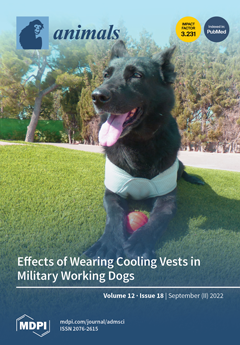The present study aims to examine the relationships between temperature and humidity and milk composition, microbial load, and somatic cells in the milk of Holstein dairy cows. For this purpose, the temperature–humidity index, ambient temperature, and relative humidity data were obtained from the nearest weather stations. Production data were obtained from four dairy farms in Golestan province, Iran, collected from 2016 to 2021. The traits investigated were protein, fat, solids-not-fat (SNF), microbial load, and somatic cell count (SCC) in milk. The effects of the environmental temperature, humidity, month, and season on the milk composition, microbial load, and somatic cells were analyzed through analysis of variance. The effects of environmental temperature, humidity, month, and season on the milk composition, microbial load, and somatic cell composition were analyzed using a mixed procedure with a restricted maximum likelihood model. Although our findings revealed that there were significant differences in fat, protein, SNF, and SCC among the different months of the year (
p < 0.01), no significant difference was observed in the total microbial count in milk. Environmental temperature presented significant impacts on fat, protein, SNF, SCC, and total microbial count within various temperature ranges (
p < 0.01). When the temperature increased from 6.2 °C to 31.3 °C, the milk protein, fat, SNF, and somatic cell count significantly decreased, by approximately 4.09%, 5.75%, 1.31%, and 16.8%, respectively; meanwhile, the microbial count in milk significantly increased, by approximately 13.7%. Humidity showed an influence on fat, protein, non-fat solids, somatic cells, and total microbial count within different temperature ranges (
p < 0.01). When the humidity increased from 54% to 82%, the milk protein, fat, SNF, and SCC significantly increased, by approximately 3.61%, 4.84%, 1.06%, and 10.2%, respectively; meanwhile, the microbial count in milk significantly decreased, by approximately 16.3%. The results demonstrate that there is a negative correlation between different months of the year, temperature, and the humidity of the environment, in terms of milk components and SCC. Our findings demonstrate that the optimum performance, in terms of milk composition, occurred in the first quarter of the year. As temperature increases and humidity decreases, milk quality decreases. Therefore, the adverse effects of environmental conditions on agricultural profits are not negligible, and strategies to better deal with the negative environmental effects are needed in order to improve milk quality in dairy cows.
Full article






